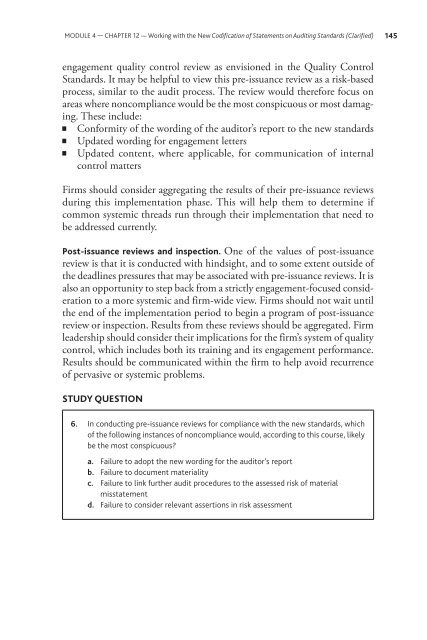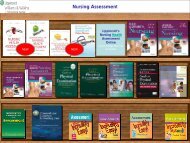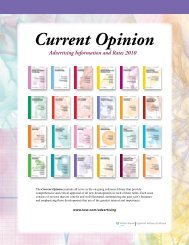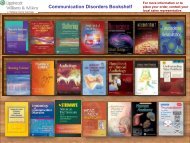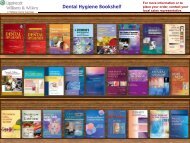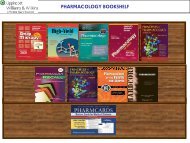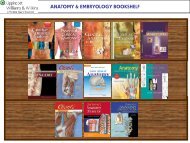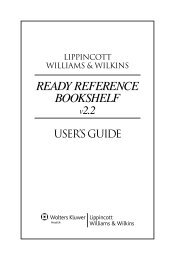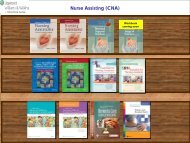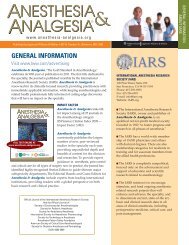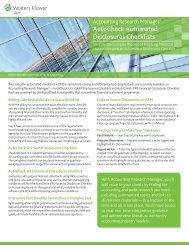TOP AUDITING ISSUES FOR 2013 - CCH
TOP AUDITING ISSUES FOR 2013 - CCH
TOP AUDITING ISSUES FOR 2013 - CCH
You also want an ePaper? Increase the reach of your titles
YUMPU automatically turns print PDFs into web optimized ePapers that Google loves.
MODULE 4 — CHAPTER 12 — Working with the New Codification of Statements on Auditing Standards (Clarified) 145<br />
engagement quality control review as envisioned in the Quality Control<br />
Standards. It may be helpful to view this pre-issuance review as a risk-based<br />
process, similar to the audit process. The review would therefore focus on<br />
areas where noncompliance would be the most conspicuous or most damaging.<br />
These include:<br />
Conformity of the wording of the auditor’s report to the new standards<br />
Updated wording for engagement letters<br />
Updated content, where applicable, for communication of internal<br />
control matters<br />
Firms should consider aggregating the results of their pre-issuance reviews<br />
during this implementation phase. This will help them to determine if<br />
common systemic threads run through their implementation that need to<br />
be addressed currently.<br />
Post-issuance reviews and inspection. One of the values of post-issuance<br />
review is that it is conducted with hindsight, and to some extent outside of<br />
the deadlines pressures that may be associated with pre-issuance reviews. It is<br />
also an opportunity to step back from a strictly engagement-focused consideration<br />
to a more systemic and firm-wide view. Firms should not wait until<br />
the end of the implementation period to begin a program of post-issuance<br />
review or inspection. Results from these reviews should be aggregated. Firm<br />
leadership should consider their implications for the firm’s system of quality<br />
control, which includes both its training and its engagement performance.<br />
Results should be communicated within the firm to help avoid recurrence<br />
of pervasive or systemic problems.<br />
STUDY QUESTION<br />
6. In conducting pre-issuance reviews for compliance with the new standards, which<br />
of the following instances of noncompliance would, according to this course, likely<br />
be the most conspicuous?<br />
a. Failure to adopt the new wording for the auditor’s report<br />
b. Failure to document materiality<br />
c. Failure to link further audit procedures to the assessed risk of material<br />
misstatement<br />
d. Failure to consider relevant assertions in risk assessment


